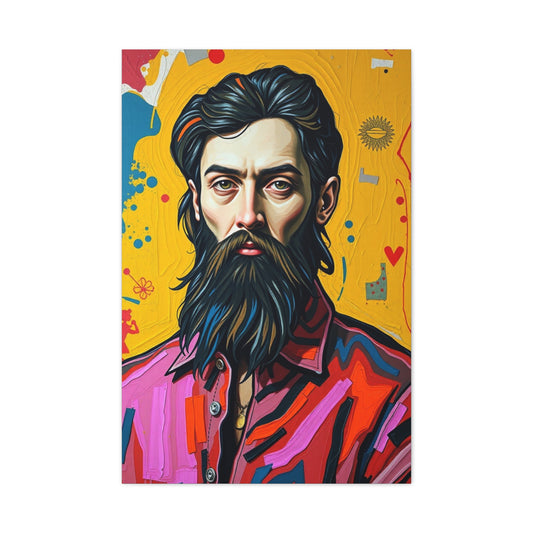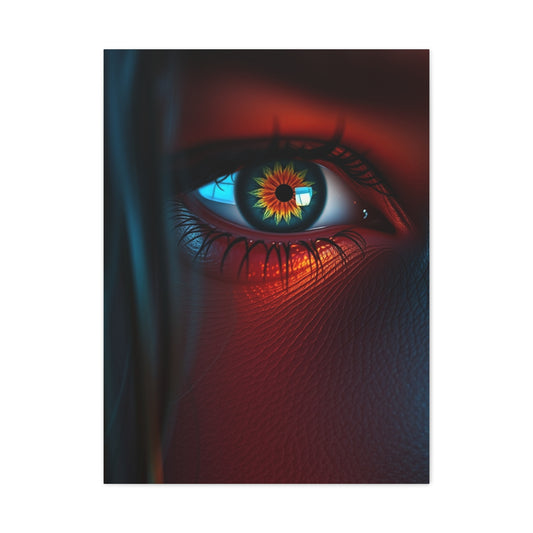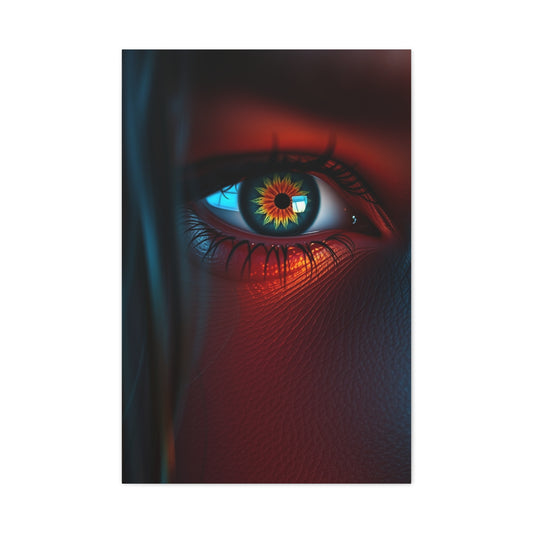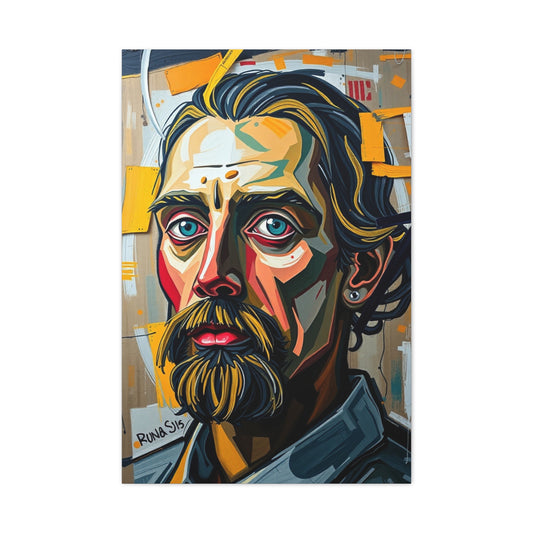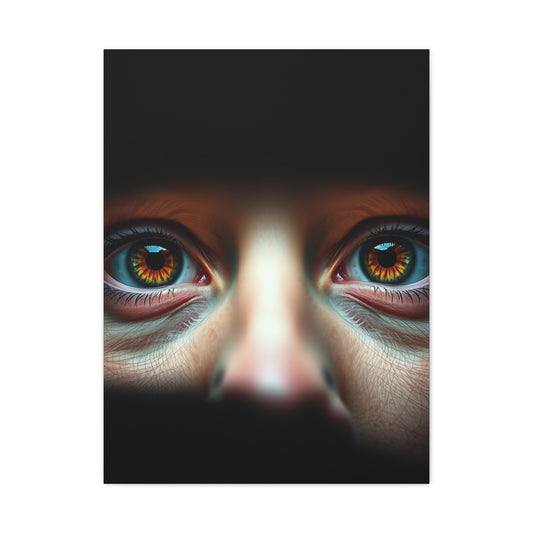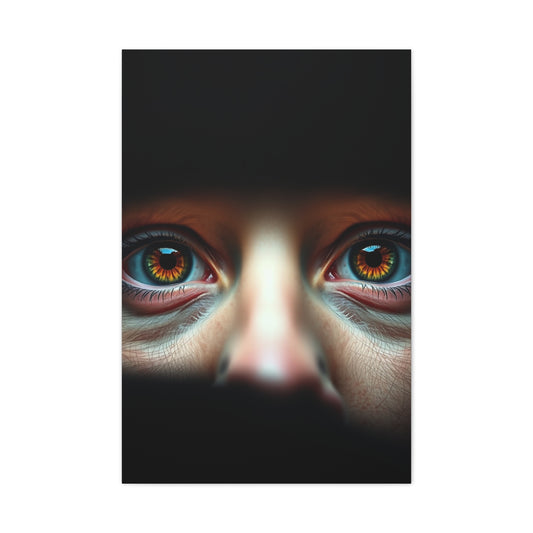Graffiti-inspired design brings a sense of movement, confidence, and personality into living spaces when approached thoughtfully. It is rooted in street culture yet adapts beautifully to modern interiors by focusing on balance, intention, and storytelling rather than chaos. The key lies in understanding how expressive visuals can coexist with furniture, lighting, and architectural details without overpowering the room.
When planning an expressive feature, researching curated visual formats helps shape expectations and ideas. A helpful overview appears within a discussion of modern interior display ideas found through this guide on creative interior print styles, which explores how expressive imagery translates indoors without feeling intrusive or disorganized.
The overall goal of incorporating graffiti influences into interiors is to create a harmonious balance where expressive visuals enhance, rather than disrupt, daily living. By carefully considering placement, designers ensure that bold imagery interacts seamlessly with furniture, lighting, and architectural features. Measured scale prevents overwhelming the senses, allowing each element to command attention without dominating the space. Intentional color relationships unify the composition, creating flow and cohesion throughout the room. When approached thoughtfully, graffiti-inspired visuals evolve from raw, spontaneous expression into refined storytelling that adds personality, depth, and energy while supporting comfort and usability in everyday life.
Choosing Color Stories That Energize Rooms
Color selection plays a defining role in graffiti-inspired interiors because bold palettes can quickly dominate a space if not managed carefully. Successful designs often limit primary hues and repeat them subtly across furnishings, textiles, or decorative accents to maintain cohesion.
Studying artist-led collections can provide insight into harmonious color narratives. One example can be explored through an expressive collection highlighted in this feature on vibrant abstract collections, where layered tones demonstrate how energy and elegance can coexist within a unified palette.
By echoing select colors throughout the room, graffiti visuals feel intentional rather than impulsive. This approach keeps the environment lively while still offering visual rest and balance for everyday living.
Balancing Urban Style With Minimalist Design
Minimalism and graffiti may seem like opposites, yet they work remarkably well together when applied with restraint. Clean lines, neutral furnishings, and open layouts provide breathing room for expressive visuals to stand out without overwhelming the senses.
Exploring contemporary artist interpretations can help define this balance. The curated selections discussed in this overview of modern angelic visuals demonstrate how expressive imagery gains impact when surrounded by simplicity and uncluttered design.
The contrast between minimal structure and dynamic visuals creates a sophisticated tension. This pairing allows graffiti influences to feel intentional, curated, and aligned with modern interior sensibilities rather than chaotic or excessive.
Creating Meaning Through Symbolic Themes
Graffiti-inspired spaces often resonate most when they communicate meaning beyond aesthetics. Symbols, figures, or cultural references can reflect personal values, memories, or shared experiences, giving depth to the environment.
The importance of honoring stories through visual elements is thoughtfully explored in this reflection on patriotic tribute decor, which highlights how symbolic imagery can evoke emotion and remembrance within a home setting.
When meaning guides design choices, expressive visuals become conversation starters rather than mere decoration. This intentional storytelling strengthens the emotional connection between residents and their living spaces.
Scaling Visual Impact For Room Proportions
Proportion is essential when introducing graffiti-inspired elements into a room. Oversized visuals can energize large, open areas, while smaller spaces benefit from more controlled compositions that avoid visual congestion.
Understanding how digital imagery translates into physical dimensions is helpful when planning scale. Insight into sizing considerations appears in this practical resource on photo storage sizing, which indirectly highlights resolution awareness and spatial planning.
By aligning scale with room proportions, graffiti elements enhance rather than dominate. This thoughtful approach ensures visual harmony and maintains comfort across different living environments.
Drawing Inspiration From Urban Landscapes
Urban scenes provide endless inspiration for graffiti-style interiors, offering textures, perspectives, and narratives rooted in city life. Incorporating these influences introduces depth and a sense of place into personal spaces.
City-inspired visuals often capture movement and atmosphere effectively, as seen in this feature exploring city skyline perspectives. Such imagery demonstrates how metropolitan energy can be translated into indoor environments with sophistication.
Urban inspiration connects interiors to the outside world, adding character and narrative. When curated carefully, it brings a dynamic yet grounded presence into everyday living areas.
Using Light To Enhance Expressive Details
Lighting significantly influences how graffiti-inspired visuals are perceived. Directional lighting, ambient glow, and natural light all interact with color, texture, and contrast to shape the overall effect.
A deeper understanding of light manipulation can be found through this creative exploration of light perspective techniques, which reveals how illumination alters depth and focus within visual compositions.
By adjusting light sources strategically, expressive details become more dynamic and engaging. Proper lighting ensures that bold visuals remain inviting and visually comfortable throughout the day.
Integrating Design Lighting With Artistic Focus
Beyond basic illumination, design-focused lighting enhances the mood and narrative of graffiti-inspired interiors. Layered lighting plans help guide the eye and emphasize specific visual zones within a room.
Designers often stress the importance of intentional lighting strategies, as discussed in this insightful overview of interior lighting planning, which outlines methods for aligning light with visual priorities.
When lighting works in harmony with expressive visuals, the space feels cohesive and immersive. This integration elevates the overall experience and reinforces stylistic intention.
Personalizing Spaces With Individual Style
Graffiti-inspired interiors thrive on individuality. Personal tastes, experiences, and creative preferences shape how expressive visuals are selected and displayed within a home.
Embracing personalization is central to successful design, as highlighted in this inspiring discussion on personal decor expression, which encourages homeowners to reflect their identity through visual choices.
By prioritizing personal resonance over trends, graffiti influences feel authentic and meaningful. This authenticity transforms living spaces into genuine reflections of those who inhabit them.
Incorporating Classic Art Influences
Blending classical influences with graffiti-inspired visuals adds depth and sophistication. Historical references introduce contrast, grounding expressive styles in artistic tradition.
A compelling example of classical artistry influencing modern spaces appears in this feature on historic worker imagery, which shows how timeless themes can coexist with contemporary expression.
This fusion bridges past and present, creating interiors that feel layered and intellectually engaging. The result is a space that honors artistic heritage while embracing modern creativity.
Blending Industrial Elements With Artistic Expression
Industrial design elements such as metal, concrete, and exposed structures pair naturally with graffiti-inspired visuals. Together, they create an authentic urban atmosphere that feels cohesive and intentional.
Industrial aesthetics are beautifully represented through this exploration of industrial bridge imagery, illustrating how structural motifs enhance expressive environments.
By combining industrial textures with creative visuals, interiors gain character and edge. This synergy results in spaces that feel bold, grounded, and thoughtfully designed.
Maintaining Visual Flow Across Connected Spaces
When graffiti-inspired visuals are introduced into open-plan or connected living areas, maintaining visual flow becomes essential. Each space should feel distinct yet connected through shared elements such as color accents, recurring shapes, or consistent tonal intensity. Without this continuity, expressive visuals can feel fragmented and disrupt the overall harmony of the home.
A practical approach is to designate one primary area where expression is strongest, then allow neighboring spaces to echo that energy more subtly. This might involve repeating a specific color in soft furnishings, decorative objects, or architectural details. The eye naturally follows these cues, creating a sense of rhythm as one moves through the space. Visual flow is not about repetition for its own sake but about creating gentle transitions that feel intentional.
Negative space also plays a critical role in preserving flow. Allowing certain walls or surfaces to remain calm gives the mind a place to rest and makes expressive areas feel more impactful. Thoughtful spacing ensures that graffiti-inspired elements feel curated rather than overwhelming. When flow is prioritized, the entire home feels cohesive, energetic, and comfortable, even with bold visual statements present.
Evolving Expressive Design Over Time
One of the strengths of graffiti-inspired interiors is their ability to evolve alongside personal taste. Rather than viewing expressive design as a fixed decision, it can be approached as an ongoing creative process. As interests change or new inspirations emerge, elements within the space can shift without requiring a complete redesign.
Flexibility begins with mindful selection. Choosing visuals and supporting decor that resonate on a deeper level ensures longevity. Over time, layering new elements such as textures, lighting variations, or complementary furnishings refreshes the environment while preserving its core identity. This gradual evolution keeps the space feeling alive and relevant rather than static.
Seasonal changes also offer opportunities for subtle transformation. Adjusting lighting warmth, rearranging furniture, or introducing new accent pieces can alter how expressive visuals are perceived throughout the year. By allowing the space to grow and adapt, graffiti-inspired design becomes a reflection of personal growth rather than a snapshot in time. This mindset transforms living spaces into dynamic environments that continually inspire creativity and comfort.
Channeling Wild Energy Through Nature Motifs
Nature-inspired graffiti elements introduce raw vitality and organic rhythm into living spaces. Animal forms, instinctive movement, and untamed symbolism translate well into expressive interiors when applied with intention. These motifs evoke freedom and strength, helping spaces feel alive rather than static.
Exploring curated wildlife visuals offers insight into how natural forms can be stylized for interiors. A diverse range of expressive inspirations can be seen through this collection focused on wildlife graffiti visuals, which demonstrates how bold natural imagery adapts seamlessly to modern environments.
When nature themes guide expressive design, rooms gain emotional depth and primal energy. This approach balances urban creativity with organic influence, resulting in spaces that feel powerful yet grounded.
Introducing Playful Culture Through Anime Influence
Anime-inspired graffiti brings youthful energy, storytelling, and vibrant character into contemporary interiors. These visuals often rely on exaggerated expressions, dynamic motion, and strong color contrasts that immediately capture attention.
For those seeking cultural creativity, a wide variety of stylistic references can be explored in this showcase of anime graffiti decor, highlighting how animated aesthetics translate into sophisticated interior expression.
When integrated thoughtfully, anime-inspired visuals add personality without overwhelming the room. Pairing them with neutral surroundings allows their expressive charm to shine while maintaining balance and maturity.
Abstract Expression As A Creative Foundation
Abstract graffiti styles allow freedom of interpretation, making them ideal for stylish living spaces that value individuality. Shapes, forms, and colors interact without literal meaning, encouraging emotional response rather than direct narrative.
The influence of abstract masters is explored beautifully in this reflection on Picasso inspired abstract decor, illustrating how abstraction fuels creative interiors.
By embracing abstract expression, interiors become more flexible and timeless. These visuals adapt easily to changing tastes while continuing to inspire curiosity and conversation.
Exploring Natural Ink Aesthetics
Graffiti rooted in natural materials brings warmth and authenticity into modern spaces. Organic pigments and earth-derived tones soften bold expression, creating a balance between intensity and calm.
An intriguing look into organic creativity appears in this feature on natural ink creation, offering insight into how nature influences expressive mediums.
Incorporating natural ink aesthetics helps spaces feel more human and connected. This approach enhances sensory appeal while maintaining an artistic edge.
Understanding Material Impact On Expression
The materials behind expressive visuals influence texture, tone, and longevity. Thoughtful selection ensures that graffiti-inspired elements maintain clarity and vibrancy over time.
A detailed discussion on material considerations can be found in this practical guide to choosing print inks, which emphasizes how material choices affect visual outcomes.
When material awareness informs design decisions, expressive interiors gain polish and durability. This knowledge supports long-term satisfaction without compromising creative intent.
Celebrating Local History Through Urban Imagery
Urban history offers rich inspiration for graffiti-style interiors. Incorporating historical city references connects personal spaces to cultural narratives and shared memory.
A compelling example of place-based storytelling appears in this exploration of historic city poster art, showing how local heritage translates into visual impact.
This approach grounds expressive design in context, adding meaning and authenticity. It allows interiors to tell stories that resonate beyond aesthetics alone.
Experimenting With Light Driven Creativity
Light-based creativity adds motion and dimension to graffiti-inspired spaces. Visuals influenced by illumination feel energetic and futuristic, enhancing modern living environments.
Innovative lighting concepts are explored in this creative feature on LED light photography, demonstrating how light transforms visual perception.
When light becomes part of expression, interiors feel dynamic and immersive. This technique elevates graffiti influence from static imagery to experiential design.
Merging Functional Design With Expression
Everyday objects can reflect creative identity when infused with expressive design principles. This mindset encourages cohesion between decor and functional accessories.
The fusion of creativity and utility is highlighted in this discussion on artistic phone case design, showing how expression extends beyond traditional decor.
Applying this philosophy indoors ensures a unified aesthetic. Expression becomes part of daily life rather than a separate decorative statement.
Embracing Seasonal Themes With Bold Confidence
Seasonal inspiration offers opportunities to experiment with mood and atmosphere. Darker palettes, dramatic forms, and playful intensity often define autumnal or festive expressions.
A striking example of seasonal creativity appears in this showcase of Halloween themed visuals, which demonstrates how thematic expression energizes interiors.
Seasonal influences refresh spaces without permanence. They invite experimentation while keeping the environment engaging and adaptable.
Using Contrast To Create Dramatic Impact
Contrast is essential in graffiti-inspired interiors. Juxtaposing light and dark, playful and eerie, or calm and intense adds visual intrigue and depth.
This dramatic balance is well illustrated through this exploration of scary Halloween visuals, where tension enhances emotional engagement.
By mastering contrast, expressive interiors avoid monotony. Instead, they captivate attention and create memorable spatial experiences.
Encouraging Emotional Interaction Through Design
Graffiti-inspired visuals have a unique ability to evoke strong emotional responses, transforming interiors from simple functional spaces into immersive environments that resonate on a deeper level. Bold colors, dynamic forms, and thought-provoking motifs capture attention and provoke feeling, inviting both residents and guests to engage with the space in a more meaningful way. Designing interiors with emotional connection in mind encourages interaction, reflection, and a sense of shared experience. Rather than being passive observers, individuals become participants in the story the space tells, which strengthens personal attachment to the environment.
Emotion-driven design fosters curiosity and introspection. Visuals that carry symbolic meaning, narrative references, or abstract intensity prompt contemplation, encouraging people to consider their own experiences and perspectives. This reflective quality transforms everyday living spaces into areas where creativity and emotion coexist, making them dynamic and thought-provoking rather than purely decorative. When expressive elements align with personal or cultural significance, the emotional impact is heightened, making the interiors memorable and deeply resonant.
Moreover, emotionally engaging interiors encourage social connection. Spaces designed to provoke discussion or shared appreciation naturally become gathering points. Friends, family, or visitors are drawn into the visual narrative, sparking conversation and connection. Graffiti-inspired elements, with their inherent energy and character, can serve as catalysts for dialogue, helping spaces feel alive and interactive rather than static.
Ultimately, integrating emotional resonance into expressive design transforms living spaces into creative sanctuaries. These interiors provide more than aesthetic pleasure; they inspire, comfort, and energize those who inhabit them. By cultivating emotional engagement, graffiti-inspired interiors achieve a rare balance between creativity and meaningful experience, making everyday life richer, more inspiring, and profoundly personal. Such spaces are not just seen—they are felt, experienced, and remembered.
Sustaining Creative Energy In Everyday Living
Sustaining creativity within expressive interiors depends on a careful balance between energy and restraint. While bold visuals and dynamic elements are central to graffiti-inspired spaces, too much intensity over time can lead to sensory fatigue. Creativity thrives best when it has room to breathe. Thoughtful intention in design choices allows expressive interiors to remain engaging without becoming overwhelming, ensuring that inspiration continues rather than fades.
Small, mindful adjustments play a powerful role in maintaining this balance. Rotating accessories introduces freshness without disrupting the overall identity of the space. Adjusting lighting can dramatically change mood and perception, softening or amplifying expressive features as needed. Rearranging furniture shifts visual flow and creates new perspectives, making familiar elements feel renewed. These subtle changes refresh the environment while preserving its creative foundation.
Restraint does not diminish expression; it refines it. Allowing certain areas to remain visually quiet enhances the impact of bolder elements elsewhere. This contrast supports long-term enjoyment by preventing visual overload and encouraging appreciation of detail. When expressive features are thoughtfully framed, they maintain their strength and relevance over time.
By nurturing creative energy with awareness and flexibility, graffiti-inspired interiors remain vibrant yet livable. Balance ensures that design serves daily life rather than competing with it. This intentional approach allows expressive spaces to inspire, comfort, and adapt, transforming creativity into a sustainable part of everyday living rather than a fleeting statement.
Blending Expressive Design With Comfort
Expressive interiors succeed when creativity and comfort exist in harmony. Graffiti-inspired visuals may be bold and energetic, but they should never compromise the sense of ease that a living space provides. Comfort anchors creativity, ensuring that expressive design remains inviting rather than visually exhausting.
Achieving this balance starts with understanding how color intensity, scale, and placement affect mood. Softer textures, ergonomic furniture, and warm lighting help offset visually charged elements. When comfort-driven details surround expressive visuals, the environment feels intentional and livable. The space supports both relaxation and inspiration, allowing creativity to coexist with everyday routines.
Comfort also encourages long-term appreciation of expressive design. When residents feel at ease, bold visuals become familiar companions rather than overwhelming statements. This thoughtful blend transforms creative interiors into spaces that nurture both imagination and well-being.
Encouraging Dialogue Through Visual Storytelling
Graffiti-inspired interiors naturally invite conversation, making them powerful tools for social connection. Visual storytelling sparks curiosity and encourages dialogue, turning living spaces into shared experiences rather than passive environments.
Story-driven design works best when visuals carry layered meaning. Abstract symbols, cultural references, or personal narratives invite interpretation, allowing viewers to engage on their own terms. This openness creates opportunities for discussion, reflection, and emotional exchange. Rather than dictating a single message, expressive visuals become starting points for connection.
When living spaces encourage dialogue, they feel more dynamic and welcoming. Guests are drawn into the stories embedded within the design, and residents rediscover meaning over time. This interactive quality elevates graffiti-inspired interiors from decorative choices to expressive platforms that foster human connection and shared creativity.
Finding Timeless Inspiration Through Iconic Photography
Timeless photography offers a powerful foundation for graffiti-inspired interiors by grounding expressive design in visual history. Classic photographic perspectives bring calm, structure, and narrative depth that balance contemporary creativity. These influences help expressive spaces feel intentional rather than fleeting.
Black-and-white landscapes and dramatic compositions often inspire restrained color palettes and bold line work. A strong example of enduring visual influence can be explored through this curated collection of classic landscape photography, which demonstrates how strong contrasts and composition guide modern expression.
By drawing from timeless imagery, creative interiors gain longevity. This approach ensures that expressive visuals remain relevant while continuing to inspire creativity over time.
Learning From Traditional Color Palettes
Historic painters offer invaluable lessons in color harmony and emotional resonance. Studying classical palettes helps modern expressive spaces feel balanced, layered, and visually rich without becoming overwhelming.
A detailed exploration of traditional color mastery appears in this insightful breakdown of historic English color palettes, highlighting how subtle tonal variation creates depth and atmosphere.
Incorporating lessons from traditional palettes allows graffiti-inspired spaces to feel sophisticated. The result is a harmonious blend of expressive freedom and refined visual structure.
Prioritizing Longevity Through Pigment Quality
Durability matters when designing expressive interiors intended to inspire for years. Color stability and resistance to fading ensure that creative visuals maintain their impact over time.
Understanding pigment performance is essential, as explored in this technical yet accessible discussion on long lasting pigment quality. This insight reinforces the importance of material awareness in creative environments.
By prioritizing longevity, expressive interiors remain vibrant and meaningful. This foresight protects both aesthetic value and emotional investment.
Incorporating Words As Visual Expression
Typography and words introduce a personal, reflective layer to graffiti-inspired spaces. Text-based visuals can motivate, comfort, or provoke thought, adding narrative depth to interiors.
Creative ways to blend words with imagery are explored in this engaging guide on photo quote projects, which shows how language enhances emotional connection.
When words become part of visual expression, spaces feel more intimate. This fusion of language and imagery transforms interiors into personal storytelling environments.
Celebrating Movement And Rhythm Through Visual Themes
Movement-inspired visuals energize interiors by suggesting rhythm, flow, and momentum. Musical or performance-related imagery translates particularly well into expressive spaces.
A vibrant example of this dynamic influence can be seen through this feature on music inspired visuals, which captures rhythm and personality through bold composition.
Movement-driven themes keep interiors lively and engaging. They encourage creativity while preventing visual stagnation.
Designing With Emotion And Romance
Emotional resonance strengthens expressive interiors by connecting design with feeling. Romantic themes, whether subtle or bold, introduce warmth and intimacy into living spaces.
Ideas centered on emotional gifting and shared experience are discussed in this heartfelt exploration of romantic design inspiration, offering insight into emotionally driven visuals.
When emotion guides design, expressive spaces feel nurturing and personal. This depth transforms creativity into lived experience.
Exploring Digital Culture Influence
Modern expressive interiors increasingly draw inspiration from digital platforms and visual culture. Online aesthetics influence color trends, composition styles, and thematic choices.
The impact of digital presentation on visual storytelling is explored in this overview of social commerce visuals, highlighting how curated imagery shapes perception.
Acknowledging digital influence keeps interiors current. It bridges online creativity with physical living spaces in a seamless way.
Introducing Calm Through Nature Inspired Imagery
Nature themes provide visual calm that balances bold expression. Birds, landscapes, and organic forms soften intense visuals while maintaining artistic interest.
A graceful interpretation of nature can be found in this collection featuring elegant bird imagery, which brings serenity into expressive interiors.
Nature-inspired visuals ground creative spaces. They restore balance and create moments of quiet reflection.
Emphasizing Line And Form Through Sketch Style
Line-based visuals highlight structure, movement, and simplicity. Sketch-inspired designs complement graffiti influences by emphasizing raw creativity and gesture.
An excellent example of expressive line work appears in this showcase of bird sketch visuals, demonstrating how simplicity enhances impact.
By focusing on line and form, interiors gain clarity. This approach refines expression without diminishing creativity.
Combining Mixed Media For Depth
Mixed media visuals add texture and complexity to expressive interiors. Layered materials and varied techniques create richness and visual intrigue.
This multidimensional approach is captured in this striking example of mixed media expression, illustrating how depth enhances storytelling.
Mixed media invites exploration. It encourages viewers to engage more deeply with expressive spaces.
Creating Balance Between Energy And Stillness
Successful graffiti-inspired interiors achieve their greatest impact when stimulation and calm exist in deliberate balance. High-energy visuals bring excitement, movement, and personality into a space, but without moments of rest, that intensity can quickly become overwhelming. Thoughtful design recognizes that the mind needs visual pauses in order to fully appreciate bold expression. When energetic elements are balanced with areas of calm, creativity feels invigorating rather than exhausting.
Restful zones play a crucial role in shaping this balance. Neutral surfaces provide visual breathing room, allowing expressive features to stand out with greater clarity. Soft lighting reduces visual strain and introduces warmth, helping the environment feel welcoming instead of chaotic. Minimalist furnishings further support stillness by reducing distraction and emphasizing function. These quieter elements act as anchors, grounding the overall design and preventing sensory overload.
Contrast is what gives expressive interiors their strength. When calm and energy coexist, each enhances the other. Bold visuals feel more powerful when framed by simplicity, while calm areas gain character from nearby creative intensity. This relationship creates a dynamic rhythm throughout the space, guiding how it is experienced from one area to another. Rather than competing for attention, each element plays a defined role within the larger composition.
When this balance is thoughtfully achieved, interiors feel both vibrant and peaceful. Creativity flows naturally, supported by an atmosphere that encourages focus, relaxation, and inspiration. Such harmony allows expressive spaces to support daily life, offering moments of excitement alongside opportunities for rest. The result is an environment that nurtures imagination while remaining deeply comfortable and sustainable over time.
Allowing Personal Evolution To Shape Design
Expressive interiors thrive when they are allowed to evolve in response to changing personal tastes, experiences, and stages of life. Creativity is not static, and living spaces should reflect that natural progression. When flexibility is built into design choices, interiors remain authentic rather than feeling locked into a single moment or mood. This adaptability allows individuals to stay connected to their environment as their perspectives mature and interests expand.
Revisiting themes over time is one of the most effective ways to support this evolution. What once felt bold and energizing may later call for refinement or balance. Subtle shifts in visual emphasis can completely change how a space feels without requiring a full transformation. Rotating expressive elements, rearranging furniture, or rethinking how color is distributed throughout the room offers fresh perspectives while preserving the original creative intent. These adjustments keep the environment engaging and responsive.
Color evolution, in particular, plays a powerful role in shaping atmosphere. As emotional needs change, tones can be softened, deepened, or redirected to better support mood and lifestyle. Adjusting color emphasis helps expressive spaces remain emotionally relevant, ensuring they continue to inspire rather than overwhelm. This thoughtful recalibration reinforces a sense of harmony between creativity and daily life.
By embracing evolution, graffiti-inspired interiors become more than visually striking environments. They turn into living reflections of personal journey, growth, and self-discovery. Each change adds a new layer of meaning, making the space feel alive and deeply personal. Rather than chasing trends, evolving interiors honor individuality and experience. This ongoing transformation ensures that creative spaces remain inspiring, relevant, and emotionally connected over time.
Strengthening Identity Through Consistent Visual Language
A strong visual identity gives expressive living spaces clarity and purpose. Graffiti-inspired interiors benefit from a consistent visual language that ties colors, shapes, and themes together across the environment. Rather than feeling scattered, the space communicates intention, allowing creativity to unfold in a cohesive and confident way.
Consistency does not mean repetition. It means establishing recognizable elements that reappear in varied forms. A recurring color tone, a signature line style, or a favored motif creates familiarity while leaving room for variation. These visual cues guide the eye naturally through the space, helping each area feel connected to the larger design story. When identity is clear, expressive elements feel grounded rather than chaotic.
This sense of identity also deepens emotional attachment. Residents recognize their values, interests, and personality reflected in the environment, reinforcing a feeling of belonging. Over time, consistent visual language becomes part of daily life, shaping how the space is experienced and remembered. It transforms creative design into a personal signature that feels both authentic and enduring.
Designing Expressive Spaces For Long Term Enjoyment
Longevity is a crucial consideration when crafting expressive interiors. While bold creativity captures attention, thoughtful planning ensures that the space remains enjoyable over the years. Designing for long-term satisfaction means balancing intensity with adaptability so that the environment continues to inspire without becoming overwhelming.
One effective strategy is to anchor the space with timeless elements that support expressive features. Neutral furnishings, versatile lighting, and adaptable layouts provide a stable foundation. These components allow creative visuals to evolve without requiring complete redesigns. As tastes shift, expressive elements can be refreshed while the core structure remains intact, preserving both effort and investment.
Long-term enjoyment also depends on how a space supports daily routines. Comfortable seating, intuitive flow, and well-considered lighting ensure that creativity enhances rather than disrupts everyday life. When expressive design aligns with practical needs, it becomes a source of ongoing pleasure rather than visual fatigue. This harmony between creativity and usability ensures that graffiti-inspired interiors remain vibrant, meaningful, and welcoming well into the future.
Conclusion
Creative graffiti-inspired design offers far more than visual excitement; it provides a powerful way to shape living spaces that feel expressive, personal, and alive. When approached with intention, this style becomes a language of identity rather than a passing trend. It reflects emotion, experience, and individuality while still supporting comfort and functionality. The true strength of expressive design lies in its ability to balance boldness with harmony, allowing creativity to enhance everyday living instead of overwhelming it.
Throughout the process of shaping expressive interiors, thoughtful decision-making remains essential. Color choices, scale, lighting, and placement all influence how visuals are experienced over time. When these elements are guided by purpose, expressive environments feel cohesive and inviting. Creativity flourishes most when it is framed by structure, giving bold ideas the space they need to resonate clearly and meaningfully.
Personal connection is another defining factor in successful expressive spaces. Designs rooted in personal stories, cultural influences, or emotional significance create deeper engagement. These interiors evolve beyond decoration, becoming reflections of values and lived experiences. As tastes shift and perspectives grow, expressive environments adapt naturally, ensuring long-term relevance and emotional resonance.
Comfort plays a vital role in sustaining appreciation for creative design. Expressive visuals thrive when supported by inviting textures, thoughtful lighting, and intuitive spatial flow. This balance encourages relaxation and inspiration to coexist. When creativity feels accessible rather than demanding, living spaces become places of renewal as well as expression.
Equally important is the concept of evolution. Expressive interiors are not static statements; they are living environments that change alongside the people who inhabit them. Subtle adjustments, seasonal shifts, and evolving themes keep the space dynamic without compromising its core identity. This flexibility allows creativity to remain fresh while preserving continuity and coherence.
Ultimately, graffiti-inspired design is about confidence and authenticity. It invites homeowners to trust their instincts, embrace individuality, and create environments that feel genuinely personal. When creativity is guided by intention, supported by comfort, and allowed to evolve, living spaces transform into meaningful expressions of identity. These environments inspire not only through bold visuals but through the sense of belonging and self-expression they cultivate.













